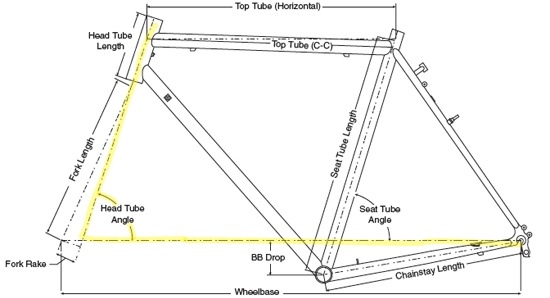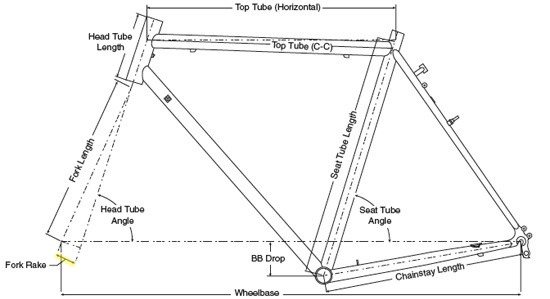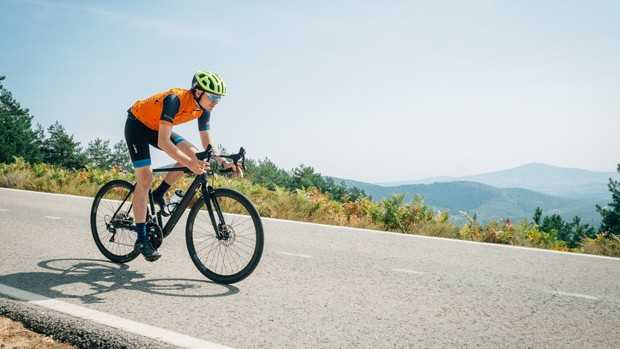Understanding the Steering
The front end of the bike is a bit complicated but we can work through it.
There are three measurements at play:
Head Tube Angle
Fork Rake (or Offset)
Fork Trail
Out of the three, Fork Trail arguably tells us the most about how a bicycle will steer. But let’s start with the head tube angle.
Head Tube Angle

The headtube angle is the angle at which the head tube is to the ground.
A bike with a steeper head angle has faster steering. There is less effort required to steer it.
A bike with a slacker head angle has slower steering. There is more effort required to steer it.
Touring bikes use slacker head angles when compared to their road/cx relatives because they generally carry a front load, and a slower steering speed helps with stability when a bike is moving at moderate to high speeds.
Head Tube Angle Comparison for 57cm Bikes:
Touring bikes 71-72 degrees
Road bikes 73-74 degrees
CX 72-73 degrees
Fork Rake (Offset)

Fork rake is the offset of the fork dropout from the straight line of the steering axis (centreline of the fork’s steerer tube).
Increasing the fork rake makes steering faster.
Decreasing the fork rake makes steering slower.

